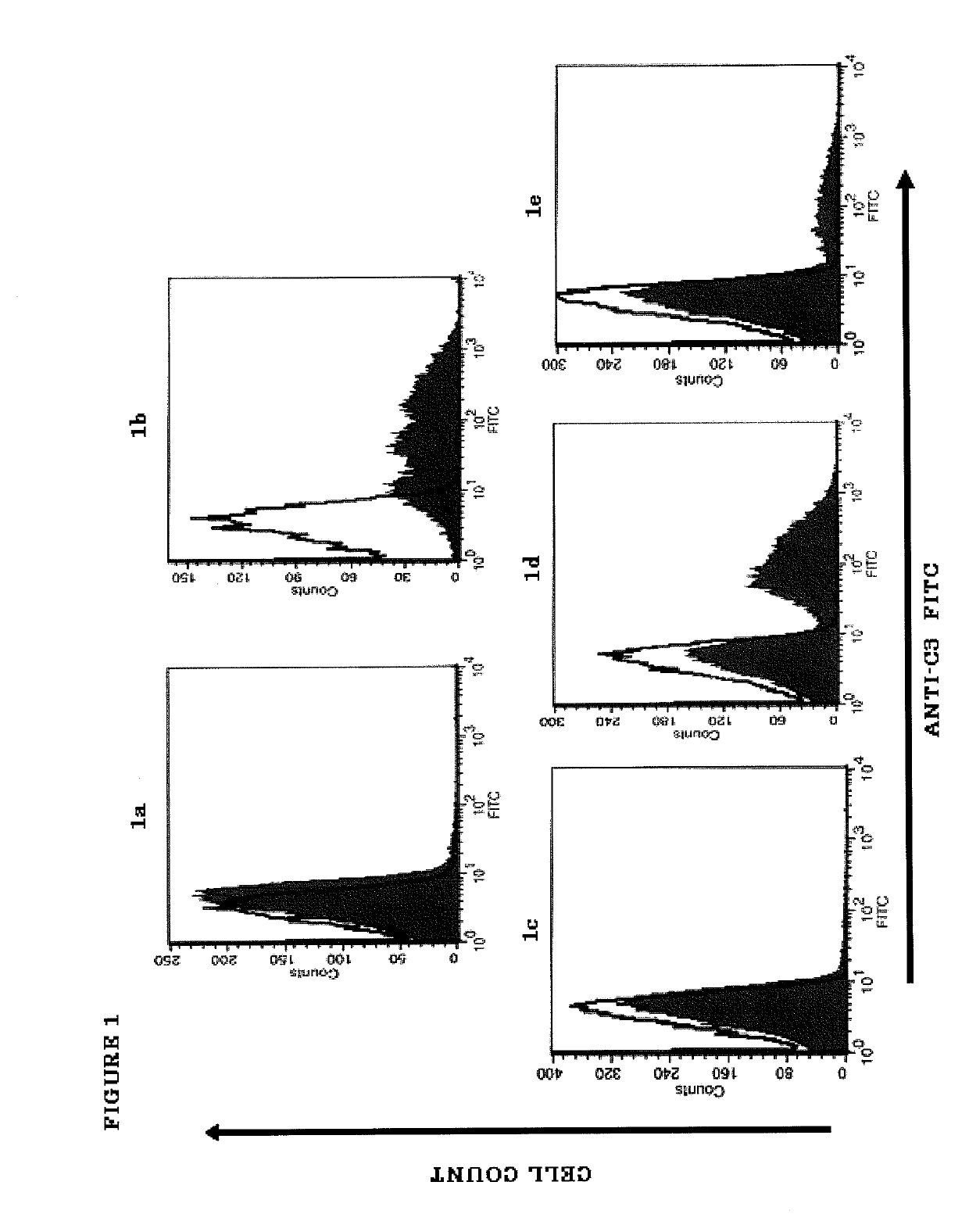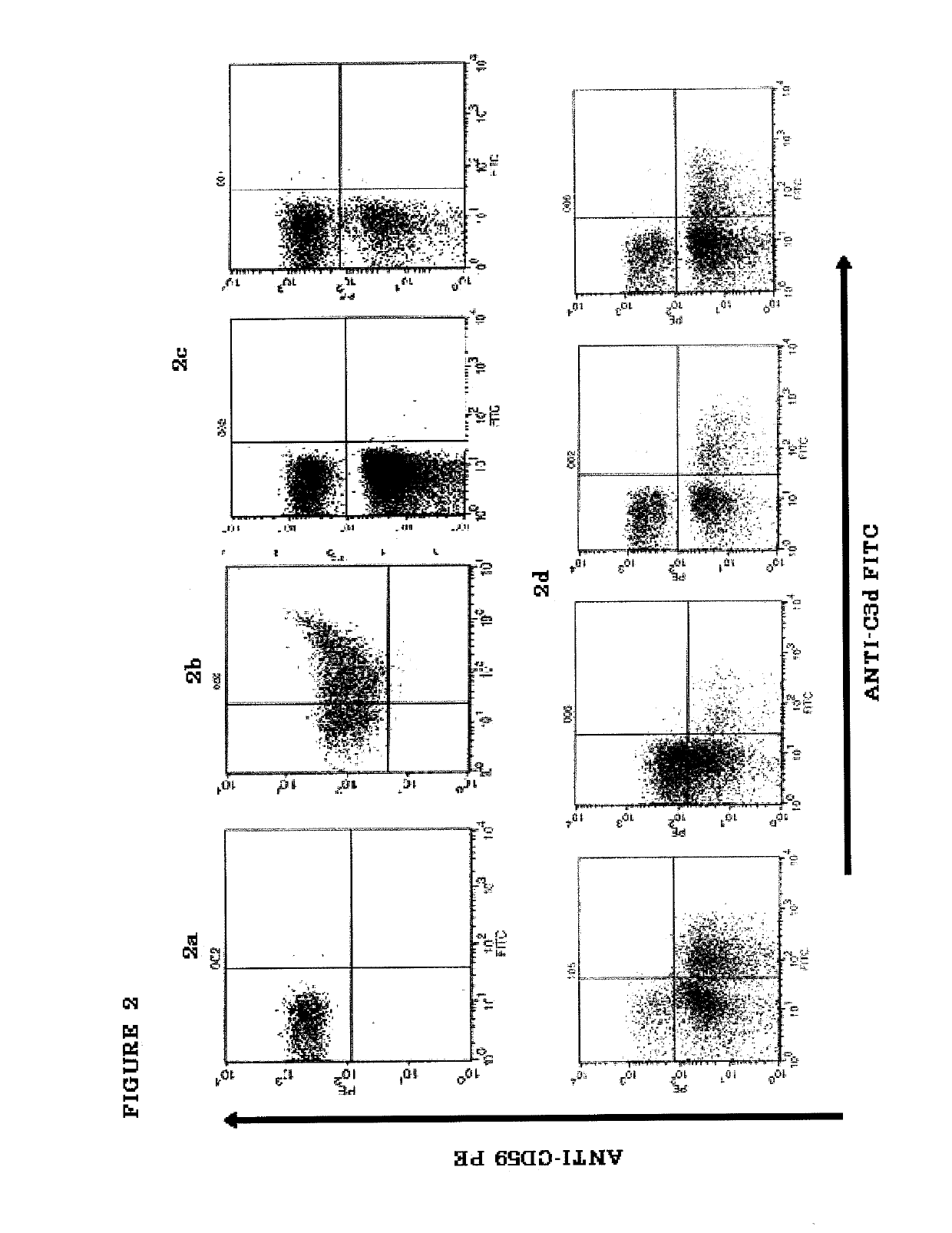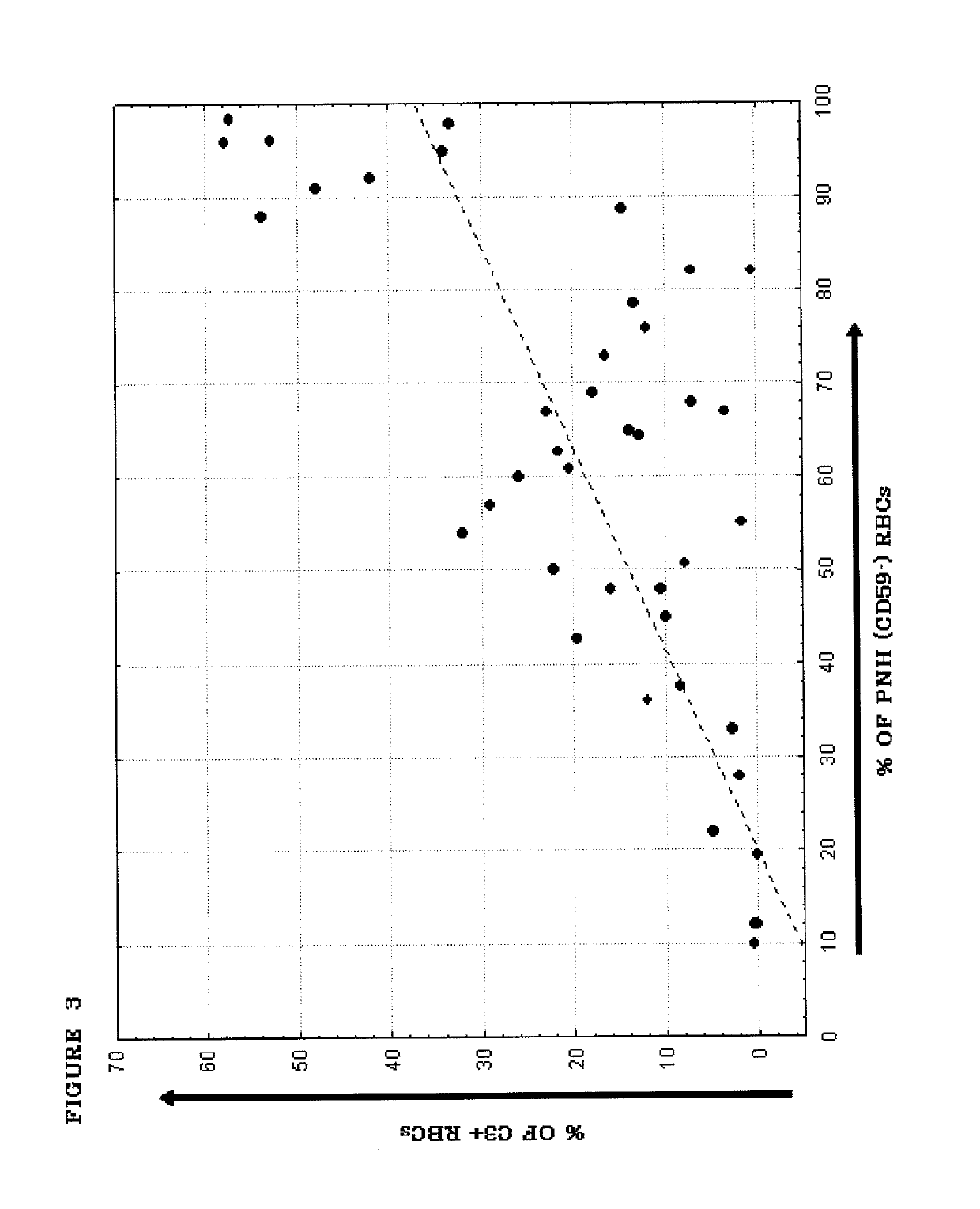Treatment of paroxysmal nocturnal hemoglobinuria, hemolytic anemias and disease states involving intravascular and extravascular hemolysis
a hemoglobinuria and nocturnal hemoglobinuria technology, applied in the direction of peptide/protein ingredients, extracellular fluid disorder, peptide sources, etc., can solve the problems of inability to achieve and maintain fully normal serum ldh and hgb levels, and the subpopulation of subjects with pnh and other forms of anemia does not optimally respond to treatment with terminal complement inhibitors, etc., to achieve the effect of increasing the survival rate of red blood cells
- Summary
- Abstract
- Description
- Claims
- Application Information
AI Technical Summary
Benefits of technology
Problems solved by technology
Method used
Image
Examples
example 1
tion of Possible Mechanism of Protection of Red Blood Cells from Hemolytic Lysis in Paroxysmal Nocturnal Hemoglobinuria (PNH)
[0179]This example uses TT30 (SEQ ID NO:3) and PNH as an example to demonstrate a possible mechanism under which TT30 can protect red blood cells from hemolytic lysis.
[0180]PNH RBCs lack the ability to control C3 convertase via CD55 and C5 convertase-mediated formation of the membrane attack complex (MAC) via CD59. In the absence of local complement alternative pathway (CAP) control (see FIG. 20), spontaneous tickover generates fluid-phase C3(H2O) that associates with factor B (fB) and properdin (P) in the presence of factor D (fD) to form the fluid-phase initiation C3 convertase, which cleaves C3 to release C3a and deposit covalently-bound C3b on the RBC surface. Association of C3b with fB and P in the presence of fD generates the surface-bound amplifying C3 convertase. The CAP amplification loop generates additional C3b and C3 convertase, and by adding C3b t...
example 2
Model of Complement-Mediated Hemolysis of PNH RBCs; Effect of Different Complement Inhibitors
[0184]PNH is a hematological disorder characterized by complement (C)-mediated intravascular hemolysis (IVH) due to a lack of C inhibitors CD55 and CD59 on affected red blood cells (RBCs). Normal, spontaneous activation of the complement alternative pathway, when uncontrolled by CD55, may lead to deposition of C3 on PNH RBCs which is not detectable in untreated PNH, generation of C3 and C5 convertases and, due to lack of CD59, to formation of the membrane attack complex (MAC) and lysis.
[0185]TT30 is a 65 kDa recombinant chimeric human fusion protein of the present invention. TT30 comprises the iC3b / C3d-binding region of C receptor 2 and the functional domains of the CAP regulator factor H (fH), which acts like CD55 to block CAP C3 convertase formation and activity on the surface of RBCs. RBCs were obtained from 5 PNH subjects (2 untreated and 3 on Ecu). Sera were obtained from the same subje...
example 2a
odel of Complement-Mediated Hemolysis of PNH RBCs; Effect of Different Complement Inhibitors
[0204]An in vitro model was developed to allow evaluation of the comparative efficacy of TT30 and eculizumab. This in vitro model is a modified Ham test, in which PNH RBCs are exposed to ABO-matched acidified normal serum (ANS), which results in spontaneous CAP activation (Pascariello et al., European Hematologic Association (EHA), Barcelona, Jun. 10-13, (2010)). When PNH RBCs from untreated patients were incubated with ANS for 24 hours, 74±16% of the PNH RBCs were lysed, with RBC ghosts staining for the presence of C3 fragments (C3frag). In contrast, incubation with 1 or 3 μM (65 or 195 μg / ml) TT30 resulted in hemolysis of only 14±26% or 5±7% of the PNH RBCs and surviving PNH RBCs were C3frag-negative on their surface. Equimolar concentrations of human fH produced much less inhibition of hemolysis (about 50% lysis), supporting the notion that TT30 is cell-targeted. The targeted fH supplement...
PUM
| Property | Measurement | Unit |
|---|---|---|
| concentrations | aaaaa | aaaaa |
| concentration | aaaaa | aaaaa |
| concentrations | aaaaa | aaaaa |
Abstract
Description
Claims
Application Information
 Login to View More
Login to View More - R&D
- Intellectual Property
- Life Sciences
- Materials
- Tech Scout
- Unparalleled Data Quality
- Higher Quality Content
- 60% Fewer Hallucinations
Browse by: Latest US Patents, China's latest patents, Technical Efficacy Thesaurus, Application Domain, Technology Topic, Popular Technical Reports.
© 2025 PatSnap. All rights reserved.Legal|Privacy policy|Modern Slavery Act Transparency Statement|Sitemap|About US| Contact US: help@patsnap.com



